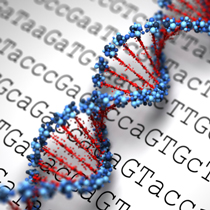discover
Fixing Defective Chromosomes
 photo: Roadell Hickman
Anthony Wynshaw-Boris
photo: Roadell Hickman
Anthony Wynshaw-Boris
As an MD-PhD student at Case Western Reserve in the late 1980s, Anthony Wynshaw-Boris watched with fascination as researchers prepared for a journey into uncharted territory.
The international Human Genome Project, launched in 1990, sought to identify and map the complete set of DNA—all 3 billion letters—in the body. A primary goal was to give scientists tools to diagnose, treat and cure disorders with roots in our genes.
"It was clear that genetics was the wave of the future," says Wynshaw-Boris, who returned to Case Western Reserve last summer and is chair of the Department of Genetics and Genome Sciences and the James H. Jewell MD '34 Professor of Genetics. "That is when I decided to become a geneticist."
Today, Wynshaw-Boris is at the forefront of gene-based research. He recently led an international research team that discovered a way to replace a chromosome that contained a severe defect with a normal chromosome.
Such research has the potential to correct chromosome abnormalities that lead to birth defects, intellectual disabilities and growth problems. Wynshaw-Boris and his team studied patients who had defective chromosomes shaped like a circle with their two ends fused together. Normal chromosomes are linear strands of DNA. But these circular, or "ring," chromosomes had missing DNA sequences, an absence that led to disabling disorders in the patients.
The team took skin cells from these patients and reprogrammed them into embryonic-like cells. They found that, during reprogramming, the ring chromosomes vanished and were replaced by normal chromosomes.
The reprogramming technique was so groundbreaking that its creator—Shinya Yamanaka, a Japanese MD-PhD investigator, professor and a member of this research team—won the Nobel Prize in medicine in 2012 for developing it.
To date, the researchers have reprogrammed cells only in cultures, not people. And they have focused on ring chromosomes, which are quite rare. But they believe their technique could have broader application.
The next step is to attempt to correct structurally abnormal chromosomes—which are far more common and cause a variety of severe birth defects—by forming ring chromosomes and then using the reprogramming technique. —Harlan Spector
Learn more:
About Anthony Wynshaw-Boris, the James H. Jewell, MD '34 Professor of Genetics






